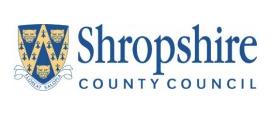- View more resources from this publisher
 Shropshire County Council
Shropshire County Council
Mini Starting Points for Mathematical Themes in the Primary School - Part One
These resources from Shropshire Centre for Mathematics Education contain a selection of ideas, pertinent to a specific theme, designed to develop mathematical thinking skills.
10
10 squares - implements collective memory
10....and ???? - combine rods to measure objects
Making an orange - use rods to discover number pairs
Pattern block tens - find different ways of filling a shape
Towers of ten - build equal and staircase towers
Join and separate - use a dice and rods to build number bond skills
Lotsa dots - calculate dots in shapes made from isometric paper
Number ladders - use cards and a dice to generate and arrange one and two digit numbers
100 squares - partitioning of 100 into tens and units
Happy families - make designated numbers by asking questions
The answer's 10, what's the question? - combine operations to give an answer of 10
Digital numbers - use sticks to produce calculator digits
Area
Boxes - surfaces of nets
Pentominoes - length and area when transforming shapes
Twos and threes - a game of strategy to cover a surface
Pattern block shapes - uses the triangle as a measure of area
Tangrams - equivalence of area when shapes are transformed
Comparing areas - fitting unit shapes together
Geoboards - calculate area of non square shapes
Grids - used to find area of irregular shapes
Rectangles - dice game to calculate area of rectangles
Dotty grids - a game to partition irregular shapes
Triangles - establishes half the area of rectangles
Circles
Consecutive numbers - reassemble individual segments correctly
Jigsaws - uses circles cut into pieces
Straight lines - create circles using a ruler
Clock face - explore patterns from numbers
Layers - create spirals and predict drops
Compass - create patterns and colour them according to rules
Rolls - uses coins to estimate and predict
Cylinders - make a set where circumference is half the height
Patterns - pass a ball and record the path created by different rules
Fences - enclose circles to investigate perimeters
Regions - use different relative positions to explore regions created
Cones - make different sized cones and order according to criteria
Holes and Gaps
Posting - explore 3D solids which will pass through shapes
Weave - explore gaps from woven paper strips
Time - use shape box to collect data
Paper folding - explore folds and cuts to produce shapes
Multilink - different holes using 36 cubes
Gaps -explore gaps from 2D tessellations
Hexomino - establish the smallest rectangular holes required
Routes - bridge a gap of three tiles
Paper hole - use A5 paper to make a hole and crawl through it
Pattern blocks - use squares, triangles and hexagons to explore shapes
Pegboard - investigate holes and perimeter
Partition box - use to predict and explore combinations
Frames - multilink cubes to explore perimeter and area
Show health and safety information
Please be aware that resources have been published on the website in the form that they were originally supplied. This means that procedures reflect general practice and standards applicable at the time resources were produced and cannot be assumed to be acceptable today. Website users are fully responsible for ensuring that any activity, including practical work, which they carry out is in accordance with current regulations related to health and safety and that an appropriate risk assessment has been carried out.
Downloads
-
10 641.32 KB
-
Area 774.12 KB
-
Circles 491.66 KB
-
Holes and gaps 585.55 KB




